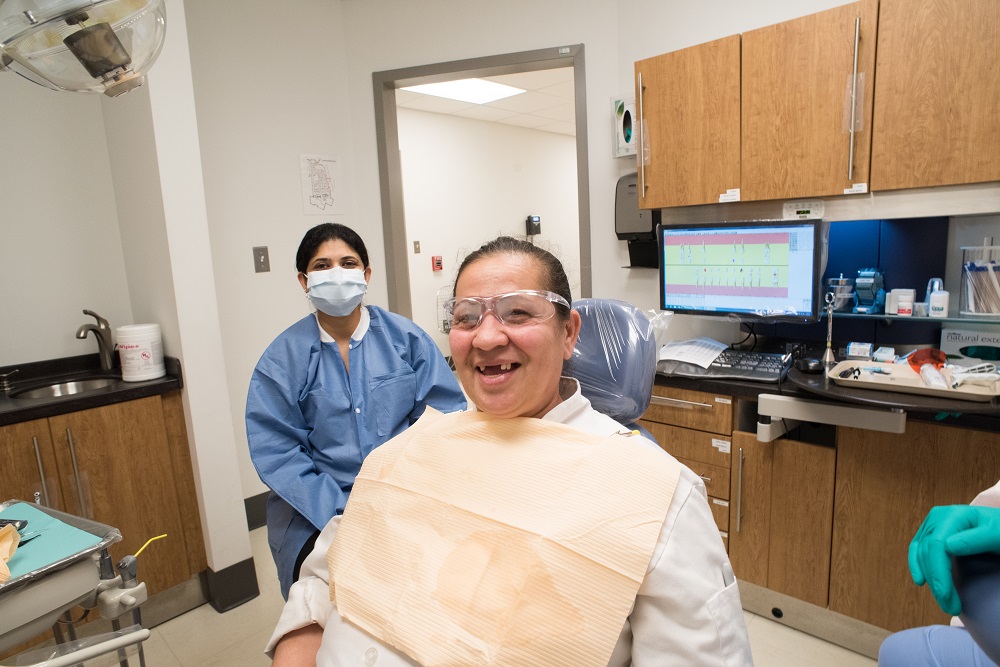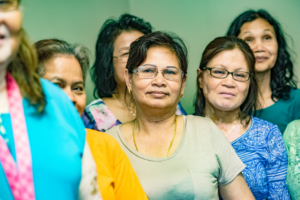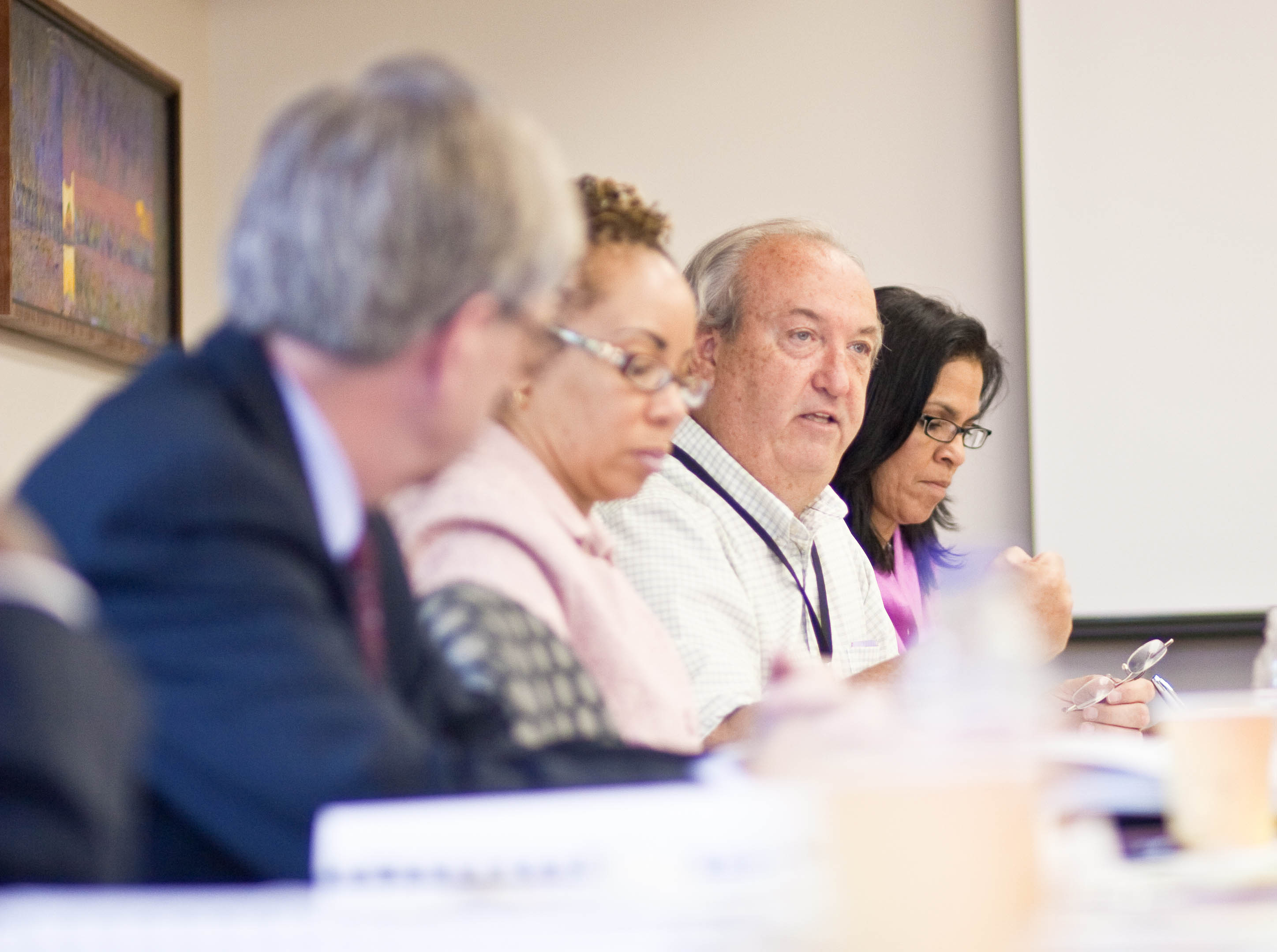A conversion foundation, CT Health, as it is often known, was created as part of ConnectiCare’s conversion from a nonprofit HMO to a for-profit company. The foundation is independent of ConnectiCare.
From the beginning, CT Health has reflected its founders’ deep commitment to taking on the challenges facing Connecticut in a data-oriented, mission-driven, and responsible way. The founding board members spent more than a year planning, examining the public health challenges facing Connecticut, and conducting a listening tour throughout the state, with sessions in English and Spanish.
Many of the decisions they made continue to shape the character of the foundation. Those include:
A focus on changing systems. The organization could throw all its money at the problems in health care and solve them – for about five minutes. Instead, the foundation focuses on changing the systems that affect people’s health as a way to make change in an enduring way.
Targeting the greatest needs. Facing a choice between focusing on the greatest number of people or the greatest need, the founders chose to focus the foundation’s resources on underserved and unserved populations, and to select priority areas based on levels of need, gaps no one else was addressing, and the potential to effect sizable change.
More than grantmaking. Awarding grants has always been a central part of CT Health’s work, but grantmaking is far more powerful when it works in concert with partnerships, policy work, and leadership development.
Integrity and credibility. Raymond Andrews Jr., a founding board member, said he and the other founders wanted the organization “to be looked at as credible people who did their homework, who came forward with a strong position on things, but had it grounded in research and grounded in good, solid thinking.”
Being analytical, but with heart. Data drives the foundation’s work, but the implications of decisions on real-life experiences is critical to what it does.

Patricia Baker, CT Health’s founding president and CEO, says she will never forget the story one woman told during the listening tour.
Her mother, who had diabetes and did not speak English, was discharged from the hospital with instructions to take her medication four times a day. She took four pills four times a day, and went into a diabetic coma and died.
“There’s two types of expertise, we’ve always believed,” Baker said. “There is research, academic, data, and there is real-life experience and context. You have to marry those together to get a well-informed approach.”
Picking priorities: “You can’t boil the ocean”
 Connecticut is a state of tremendous disparities. It is the richest state in the country but has residents who suffer from the most severe results of poverty. There are people who fall through safety nets and suffer because of forces standing in the way of their basic human rights to health and happiness.
Connecticut is a state of tremendous disparities. It is the richest state in the country but has residents who suffer from the most severe results of poverty. There are people who fall through safety nets and suffer because of forces standing in the way of their basic human rights to health and happiness.
Yet a phrase often used at the foundation is “You can’t boil the ocean.” In other words: We must think strategically and find the places we can make a difference.
Since 1999, the foundation has chosen focus areas based on a sense of what was needed and where there was opportunity to change systems.
Initially, the foundation worked on three priority areas:
Children’s mental health: The foundation’s work began at a time of crisis for children’s mental health in Connecticut. Close to 500 children were being sent out of state to receive treatment. Most of the state’s spending on children’s mental health went to those in deep-end treatment facilities. Children of color were not getting treatment at all until they were involved in the juvenile justice system.
CT Health’s approach focused on preventing children from needing those most-intensive levels of care by developing a community-based system of early identification and intervention for children at risk. The foundation also helped parents come together and advocate for their children and to improve the system.
Oral health: In the late 1990s, Connecticut had among the lowest rates of access to oral health care for low-income children in the country. In 1998, 40 percent of second graders in Connecticut – and 50 percent of second graders from low-income families – had untreated dental problems.
 To raise awareness and find solutions, CT Health commissioned a study on improving oral health care across the state, funded an advocacy organization known as the Connecticut Oral Health Initiative, and awarded a grant to support a class-action lawsuit that ultimately led to higher Medicaid reimbursement rates for dental care in Connecticut.
To raise awareness and find solutions, CT Health commissioned a study on improving oral health care across the state, funded an advocacy organization known as the Connecticut Oral Health Initiative, and awarded a grant to support a class-action lawsuit that ultimately led to higher Medicaid reimbursement rates for dental care in Connecticut.
The foundation’s work and that of many others led to tremendous improvement. By 2013, Connecticut topped the nation in the percentage of children with Medicaid who visited a dentist, and the percentage of poor children ages 3 to 5 with untreated dental decay fell by 50 percent between 2007 and 2011.
>>> Read more: Expanding access, improving smiles: Connecticut’s accomplishments in oral health
Racial and ethnic health disparities: Connecticut has large disparities between white and Black, Latino, and Asian American residents in health indicators such as mortality, chronic diseases, infectious diseases, hospitalizations, pregnancy and birth outcomes.
 The foundation provided funds to create The Connecticut Health Disparities Project, a two-year effort by the state Department of Public Health to improve the statewide infrastructure for documenting, reporting, and addressing racial and ethnic health disparities through data. The project included revising/cleaning up 27 databases to ensure that data on race and ethnicity were available.
The foundation provided funds to create The Connecticut Health Disparities Project, a two-year effort by the state Department of Public Health to improve the statewide infrastructure for documenting, reporting, and addressing racial and ethnic health disparities through data. The project included revising/cleaning up 27 databases to ensure that data on race and ethnicity were available.
A resulting report in 2009 found meaningful improvements. Still, there was evidence of persistent disparities. The report suggested a need for increased public demand for health equity in Connecticut and for citizens to hold leaders accountable for achieving it.
Beyond grantmaking: Policy and leadership
 The foundation’s grantmaking has always been part of a broader strategy to achieve change in the systems that affect people’s health – a strategy that also relies on policy work and leadership development.
The foundation’s grantmaking has always been part of a broader strategy to achieve change in the systems that affect people’s health – a strategy that also relies on policy work and leadership development.
As a private foundation, CT Health does not lobby. Instead, its role is to provide information that can help policymakers understand the implications of the choices before them. This has included commissioning detailed analysis of the fallout from budgetary decisions and research on promising models that could be implemented in the state.
Changing systems also requires having leaders who understand the key issues – and ensuring that those who are most affected by policy changes have a voice in decisions.
In 2005, the foundation launched the Health Leadership Fellows program to train a diverse cadre of emerging leaders about health equity, leadership, and the skills to change systems and policies. In 10 years, nearly 200 fellows completed the program. The foundation also hosted a cohort of established leaders in the 2017-2018 Academy for Health Equity Advocacy & Leadership. The graduates of both programs remain part of a powerful and connected alumni network.
A shift to health equity
In 2013, CT Health made a strategic shift: The foundation would make health equity its central focus.
The foundation’s board and leadership chose to dig deep in one priority area, rather than stretching its resources to cover a wider range of priorities. The decision reflected confidence in the work others were doing in oral health and children’s mental health, as well as the fact that both are health equity issues. Both oral health and children’s mental health remained central to the foundation’s focus on integrating the delivery of physical, mental, and oral health care.
>>> Read the foundation’s 2013-2017 strategic plan
>>> Read the foundation’s 2018-2023 strategic plan
The decisions also reflected a recognition of the fact that while advancing health equity will benefit everyone, broad approaches to improving care alone would not be enough to eliminate the vast disparities that exist.
The shift coincided with the rollout of the major provisions of the Affordable Care Act, when insurance coverage became available and more affordable to hundreds of thousands of Connecticut residents. The foundation viewed its work as ensuring that equity would be advanced through the reforms. CT Health funded navigators and assisters who could help people sign up for coverage made available through the health law, and funded research on ways to ensure people understood how to use the insurance they were buying.
To help improve the health care system people were gaining access to, the foundation awarded grants to hospitals to integrate oral health and behavioral health into primary care, and helped school-based health centers chart a path toward sustainability at a time when health care payment systems were shifting.
The foundation also made significant investments in efforts to fundamentally reshape the health care system in Connecticut, from one that focuses on episodes of care to one that emphasizes patient outcomes and experience. Much of this work occurred through the State Innovation Model, a federal grant made available under the Affordable Care Act that allowed Connecticut to work toward redesigning the health care system.
The COVID-19 pandemic
The COVID-19 pandemic brought challenges no one could have anticipated, but outcomes that were sadly predictable: People of color in Connecticut were far more likely to get sick and die from the virus, and were more likely to be in economically precarious circumstances that made them especially vulnerable to the fallout of the pandemic.
To address the needs, CT Health changed course. The foundation provided emergency grants to organizations that had strong connections in communities of color and could quickly get money to those who needed it for housing, food, and other basic needs.

Recognizing the need for reliable information, the foundation also awarded grants to community organizations that could serve as trusted messengers about how to stay safe and access resources for assistance. When vaccines became available, many of the same organizations shared messages about the vaccine with their communities; some even hosted vaccine clinics in community sites that vaccinated thousands of people.
In addition, the foundation worked with the organization 4-CT to fund community health worker positions in five local public health departments. Research found that the community health workers effectively met residents’ medical and non-medical needs, and that initiative likely averted enough COVID-19 cases to offset the cost of the community health worker services.
To help assure that state leaders understood the impact of relief efforts in communities, the foundation established a Health Equity Collaborative, made up of representatives from community-based organizations. They came together regularly and shared feedback with state officials and health system leaders, providing critical information that helped inform government efforts.
>>> Read about how CT Health responded to COVID-19
>>> Read more: Lessons from the COVID-19 pandemic
A new strategic plan: Coverage expansion, community health workers, and a new focus area
In 2024, following an extensive planning process, the foundation adopted a new five-year strategic plan. The new plan includes continued focus on making sure all residents have access to health care coverage and ensuring that community health worker services are sustainably funded, allowing their work to be well-integrated into the health care and social service systems. The plan also calls for continuing to support advocacy, news coverage of health policy, and the standardized collection of race, ethnicity, and language data – all things that are critical to allowing for policy and systems changes that will advance health equity.
The new plan also calls for the foundation to take on a new issue area: maternal health equity for people of color. This reflects both the extensive disparities in maternal mortality and morbidity, as well as strong momentum in Connecticut and nationally to do something about these inequities.
As CT Health evolves, the principles outlined by its founders remain strong guideposts in the work to improve the health of people in Connecticut.

